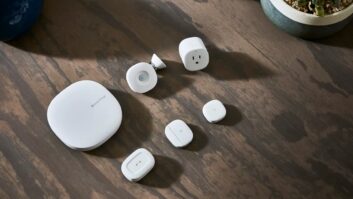New research paints a rosy picture for the road to the smart home.
Home-automation products will add $1.8 billion of new CE sales through next year, according to The NPD Group, growing an impressive 74 percent from 2016.
This growth will be driven primarily through sales of security and monitoring products, as well as power and sensors. Stephen Baker, NPD VP and industry analyst, said the industry can thank both Amazon Alexa and Google Home for boosting awareness.
“Digital assistants will claim a major piece of the consumer market in 2018, and in doing so will drive adoption of compatible devices and solutions,” he noted.
In additional good news for retailers, Parks Associates said a shift in purchase behaviors in the past year has made brick-and-mortar retail the most common purchase channel for smart-home products. Among current smart-home owners, 26 percent purchased their device from a retailer such as Home Depot, Walmart or Sears, the research firm said.
Brick-and-mortar retail edged out home security dealers for the top spot, pushing online purchases to third place. Rounding out the list of most popular ways to buy smart-home devices are heating/cooling contractors; custom installers without a showroom; a broadband service provider; an electric utility; and other service contractors like electricians and plumbers.
However, Parks tempered the glad retail tidings with concerns for a fragmented IoT experience as consumers purchase more stand-alone products separately to add to their connected homes.
“There are increased opportunities across the consumer entertainment, technology, mobility, and connected home markets,” said Dina Abdelrazik, Parks research analyst. “New use cases are emerging as access to consumer data is creating additional value, new methods of personalization, and the possibility of an enhanced user experience.”
“However,” she cautioned, “as consumers become more connected, their digital lives in many ways become more complicated, and solving this potentially fragmented consumer experience, addressing privacy concerns, and crossing traditionally separate boundaries will be the dominant challenges for companies in 2017 and 2018.”













